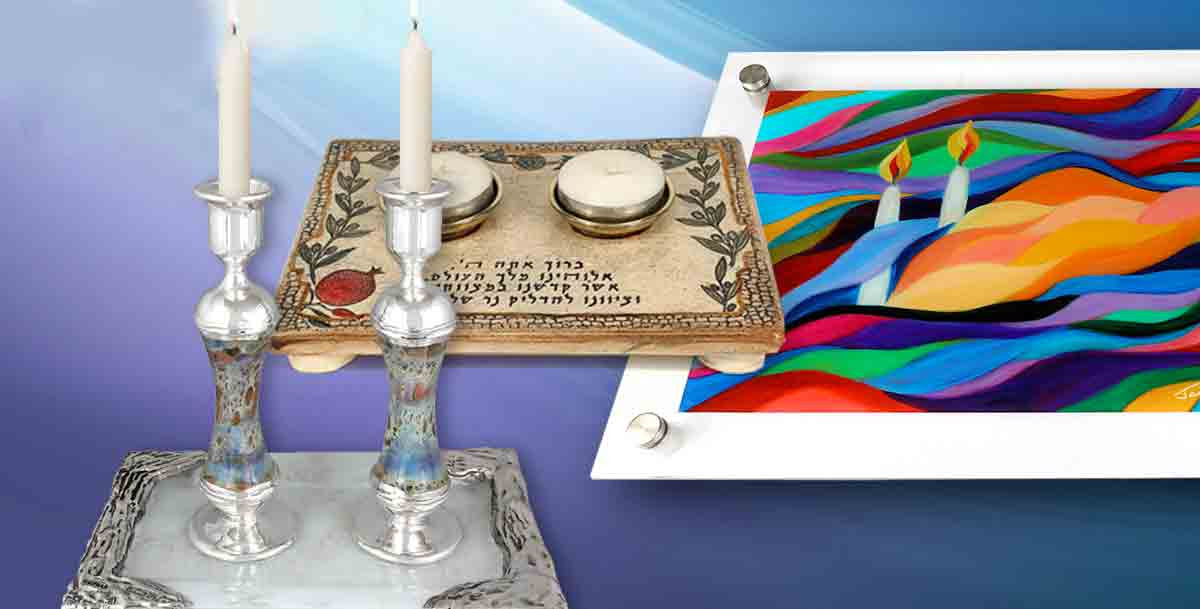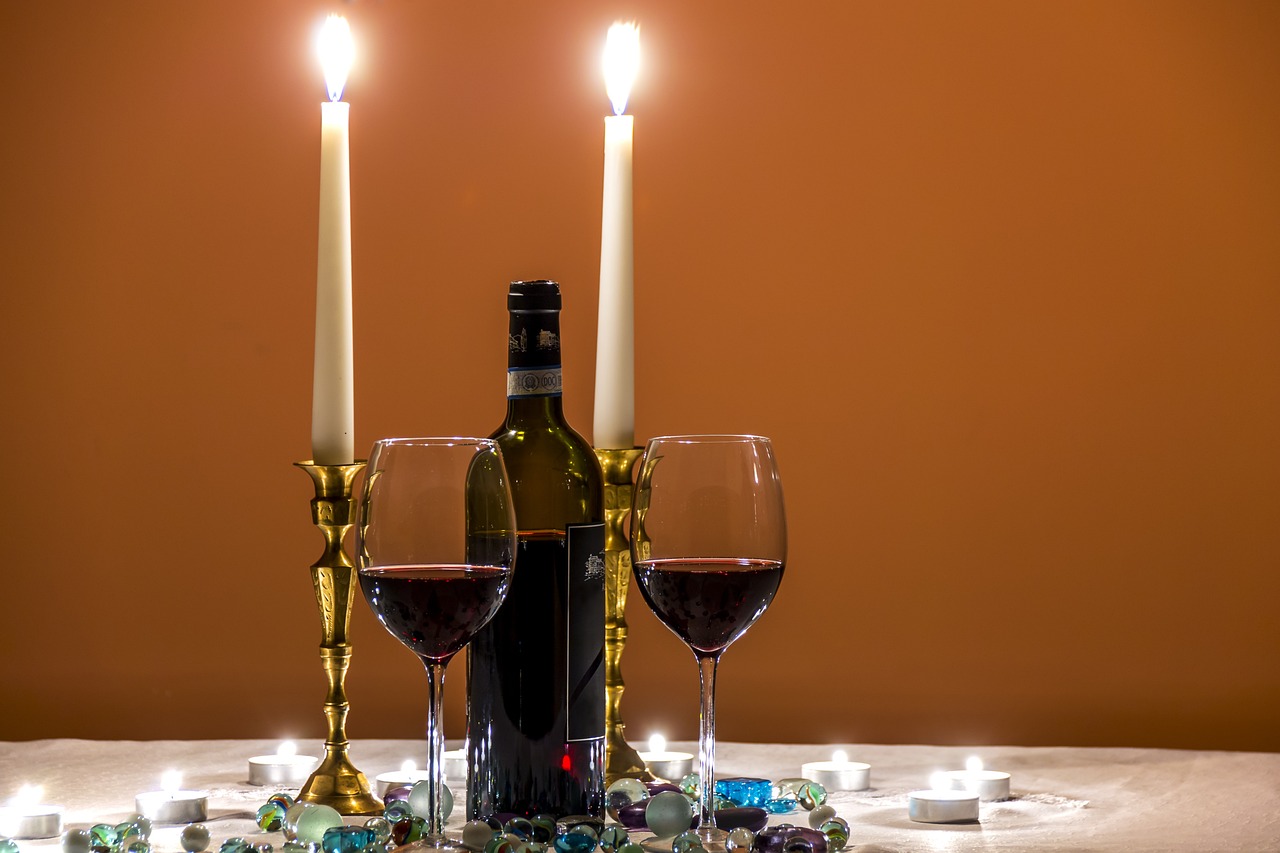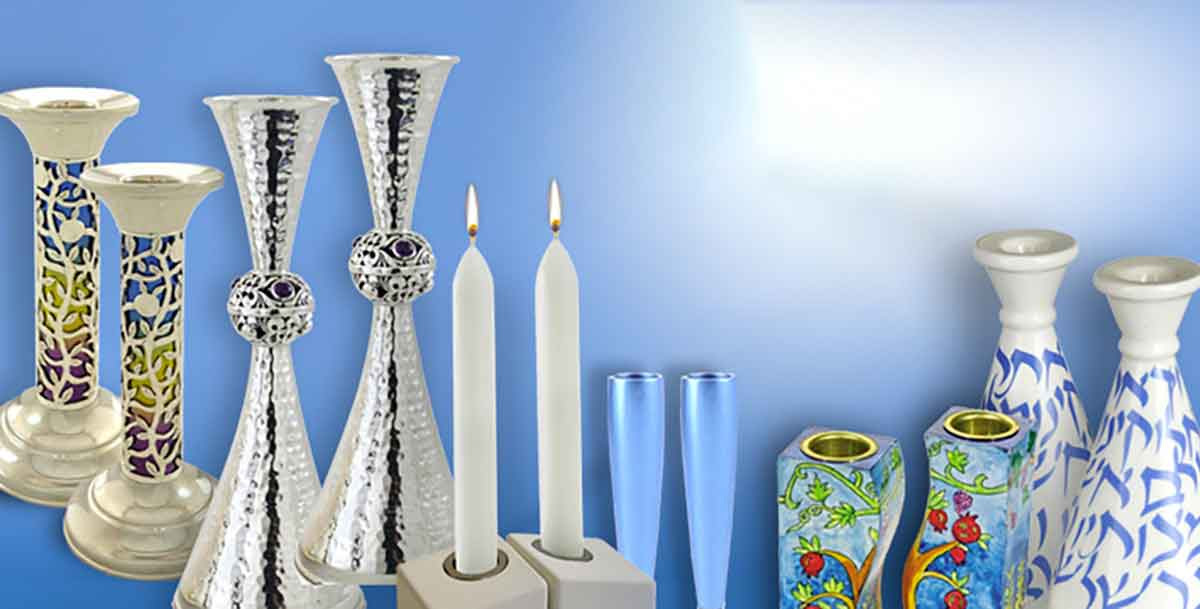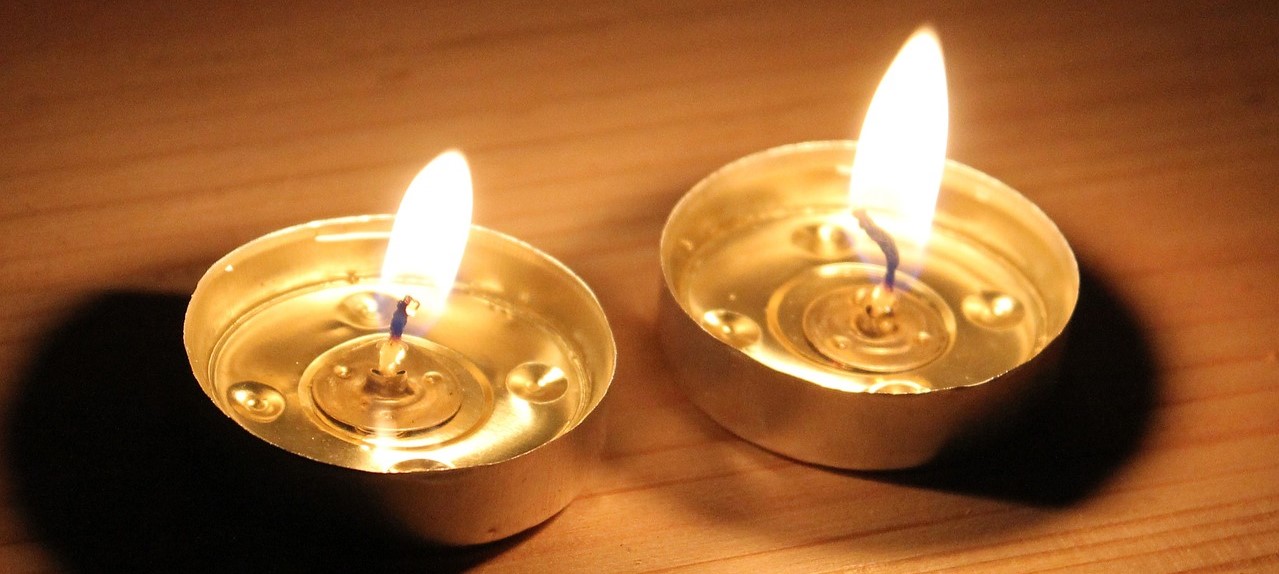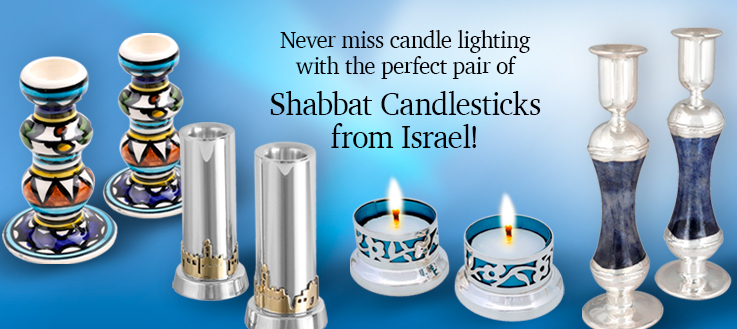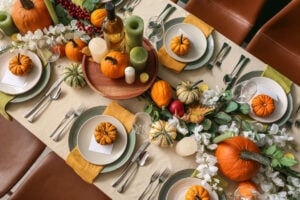It’s hard to think of something more iconic and more uniquely Jewish than lighting Shabbat candles to welcome in the Day of Rest.
Historically, ornate Shabbat candlesticks have been among the most popular and traditional gifts for a young woman as she reached the age of Bat Mitzvah or on the occasion of her wedding. And while the tradition of lighting candles to welcome Shabbat is often taught and passed down from mother to daughter, any Jew can take on this custom, whether you grew up with it or are just starting out!
Where does this age-old tradition come from, and why do we do it and how? Read on for all the Shabbat candle lighting facts you need to know!
Origins of Shabbat Candle Lighting
While there is no mention of lighting candles specifically in the Tanakh, the Talmud cites it as one of the primary mitzvot (commandments) associated with women, since they have been traditionally seen as the keepers of the home. The Torah forbids Jews from lighting fires on Shabbat – but, our Sages ruled that we can use fires lit beforehand, and commanded us to light a light to see by before sundown, in order to make Shabbat dinner more joyful and festive and instill a sense of calm and beauty in the home.
Eventually, lighting Shabbat candles became associated as the official start of Shabbat.
The tradition also harkens to the creation of the world. Adam and Eve were expelled from Gan Eden just before Shabbat on the 6th day, and they had not borne witness to a sunset. Lighting a fire just before Shabbat once again adds an air of peace and stability before entering into a distinct phase of the week.
How To Light Shabbat Candles
In most of the world, the custom is to light Shabbat candles 18 minutes before the sunset, when Shabbat officially begins. This means the candles must be able to burn for at least this duration of time and into the evening once Shabbat is underway.
Once one has said the bracha or blessing of lighting Shabbat candles, one has accepted the laws of keeping Shabbat until it lets out. The practice of lighting candles begins with kindling the flame—not allowed during Shabbat itself—and then covering one’s eyes so as not to take in the light while reciting the blessing:
Baruch atah Ad•hnai El•haynu melech ha-olam, asher kideshahnu bemitzvohtahv vitzeevanu lihhahdleek nair (shel) Shabbat.
It is advised to light the Shabbat candles in a visible but safe place in the house, so some Jewish households affix a high shelf in the corner of the room where the Friday night meal is to be enjoyed, or place them on their own small table or counter space. Traditionally, the candles are not allowed to be moved at all during Shabbat, and should not be in a place where they can be accidentally knocked over, but the household should still enjoy their beauty and significance.
Shop everything you need for Shabbat here, from candles to beautiful candlesticks and more!
Number of Shabbat Candlesticks
The custom around the world of lighting Shabbat candlesticks is two, as a symbol of the two commandments of Shabbat: keep and remember. Many people like to light more than this though, and there is no limit to how many one can choose to light. For instance, it is a prevalent custom for mothers to light one extra candle per child. Since there is no problem lighting extra candles, there is no limit to light for other relatives, friends, and so on.
Since two is the prevailing custom all over the globe in every community, most Jews light at least two, and shabbat candlesticks are generally sold in sets of two.
Different Styles of Candlesticks
The most traditional material for a candlestick is silver, as this is sturdier than gold, and very beautiful, but nowadays there is no shortage of different styles and materials available. In fact, Judaism has a concept of “beautifying the mitzvah” (commandment), so whatever your taste, a nice set of candlesticks isn’t just good looking on the shelf but enhances the mitzvah as it is performed each week. So whether you prefer traditional styles, or modern styles with materials like stone, anodized aluminum, brightly painted ceramic, or any other designs, there is a no shortage of amazing choices!
